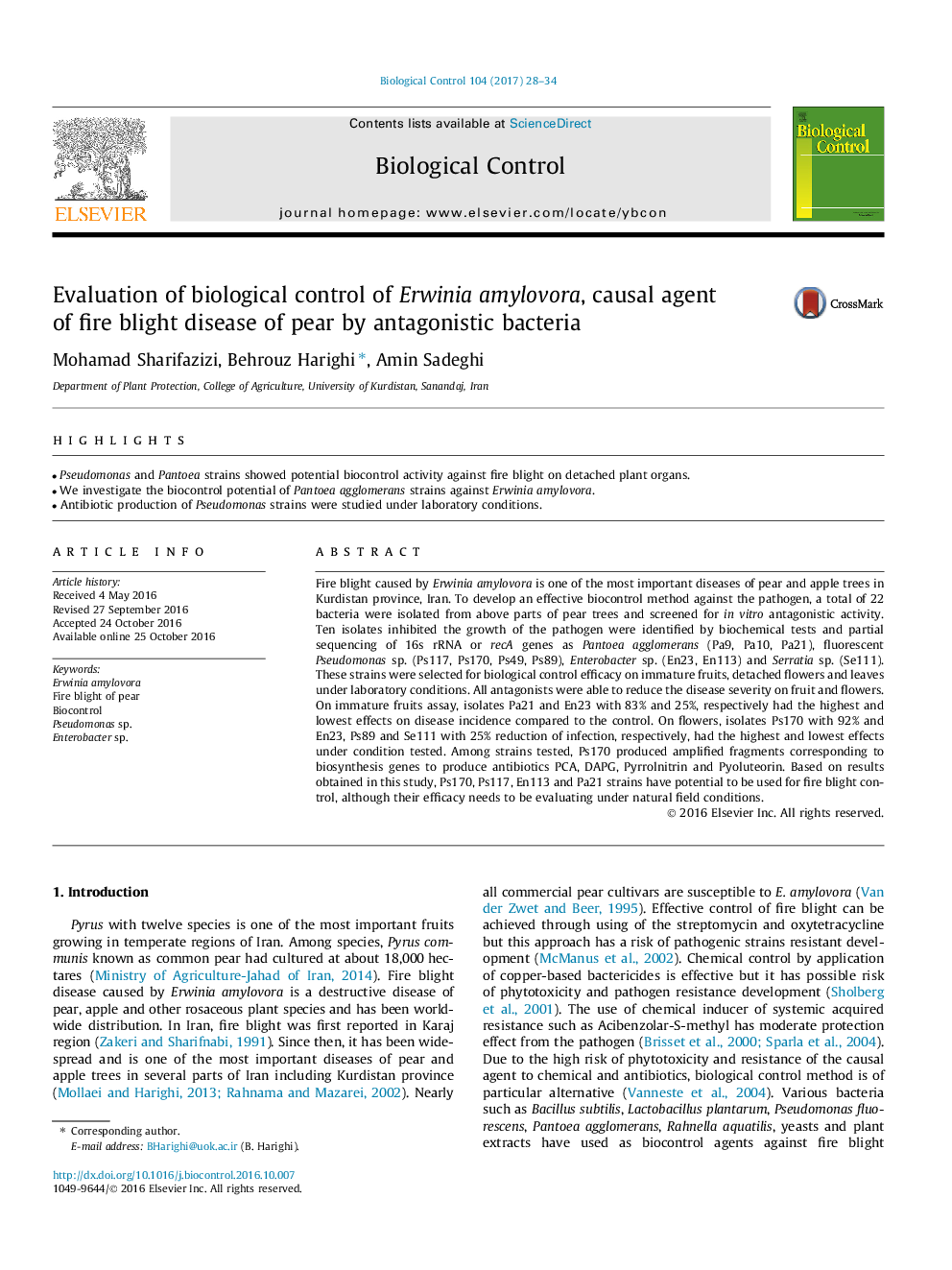| Article ID | Journal | Published Year | Pages | File Type |
|---|---|---|---|---|
| 4503523 | Biological Control | 2017 | 7 Pages |
•Pseudomonas and Pantoea strains showed potential biocontrol activity against fire blight on detached plant organs.•We investigate the biocontrol potential of Pantoea agglomerans strains against Erwinia amylovora.•Antibiotic production of Pseudomonas strains were studied under laboratory conditions.
Fire blight caused by Erwinia amylovora is one of the most important diseases of pear and apple trees in Kurdistan province, Iran. To develop an effective biocontrol method against the pathogen, a total of 22 bacteria were isolated from above parts of pear trees and screened for in vitro antagonistic activity. Ten isolates inhibited the growth of the pathogen were identified by biochemical tests and partial sequencing of 16s rRNA or recA genes as Pantoea agglomerans (Pa9, Pa10, Pa21), fluorescent Pseudomonas sp. (Ps117, Ps170, Ps49, Ps89), Enterobacter sp. (En23, En113) and Serratia sp. (Se111). These strains were selected for biological control efficacy on immature fruits, detached flowers and leaves under laboratory conditions. All antagonists were able to reduce the disease severity on fruit and flowers. On immature fruits assay, isolates Pa21 and En23 with 83% and 25%, respectively had the highest and lowest effects on disease incidence compared to the control. On flowers, isolates Ps170 with 92% and En23, Ps89 and Se111 with 25% reduction of infection, respectively, had the highest and lowest effects under condition tested. Among strains tested, Ps170 produced amplified fragments corresponding to biosynthesis genes to produce antibiotics PCA, DAPG, Pyrrolnitrin and Pyoluteorin. Based on results obtained in this study, Ps170, Ps117, En113 and Pa21 strains have potential to be used for fire blight control, although their efficacy needs to be evaluating under natural field conditions.
